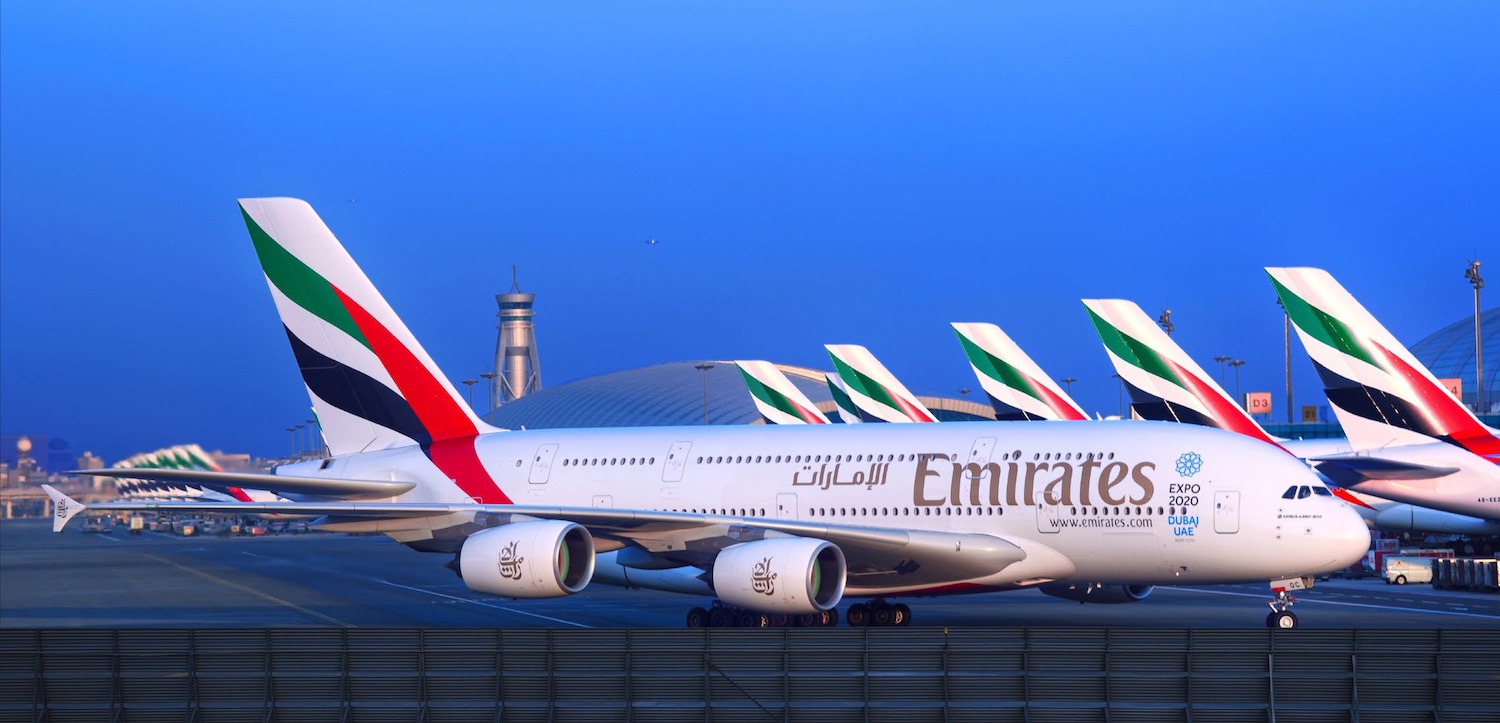Sir Tim Clark, President of Emirates, wants a truce with U.S. carriers.
He’s tried of being vilified and thinks a partnership with American, Delta, and United would benefit everyone involved.
In an interview with Business Insider, Clark scolded U.S. carriers for their childish whining.
They need to grow up and we need to have a mature way of going about our business.
He added that these carriers cannot show any direct harm by the presence of Gulf Carriers in the USA, maintaining that the biggest beneficiary of Open Skies has been the U.S. economy:
The beneficiaries of Open Skies driven by the likes of us has been the US economy and that’s kindly marginalized in the US3’s narrative. We asked them to show competitive harm, but they won’t because they can’t.
In a subtle jab to American and United, both of which maintain hubs at Chicago O’Hare, Clark questions why these airlines would give up lucrative connecting traffic from Emirates.
It seems to be lost on them that this can work and make everybody happy. For goodness sake, all of the business we bring across (the ocean). Don’t you think they’d want to go other places than Chicago?
He also mentions how well Emirates’ partnership is working out with JetBlue and Alaska Airlines:
Think about the feed we do give to my friend Robin Hayes who runs JetBlue in Fort Lauderdale, Miami, New York, and Boston. And on the other side, I’ve got Brad Tilden with Alaska on Seattle and all the points down there.
Thus, he wants an interline deal with the U.S. legacy carriers.
What they’ve done is cut the interline deal. Emirates can’t sell tickets on any of them. I mean talk about cutting off your nose to spite your face.
My Thoughts
I’m going to assume the usually erudite Clark was being serious and not facetious. Even so, his analysis lacks one important fact: direct competition.
No, none of the U.S. legacies serve the Middle East directly anymore beyond Israel. But Emirates’ strategy goes far beyond transporting passengers to the Middle East. Instead, Emirates wants to transport passengers to Asia, Africa, Europe, and Australia via the Middle East.
These routes compete directly with American, Delta, and United who also serve Europe, India, East Asia, and Australia. Why would Delta, United or American want to make it easy for passengers to fly a short domestic hop on their metal and connect on Emirates for the longhaul(s)? Because the choice isn’t Emirates or no one, but in many cases Emirates or themselves.
Clark points to two U.S. airlines Emirates works well with, but neither JetBlue or Alaska have wide body planes or serve overseas route. Just as Emirates feeds them traffic, JetBlue and Alaska feed Emirates traffic.
CONCLUSION
While any interline deal benefits consumers, working with Emirates would help Emirates far more than it helps U.S. airlines.
image: Emirates





“No, none of the U.S. legacies serve the Middle East directly anymore. But Emirates’ strategy goes far beyond transporting passengers to the Middle East. Instead, Emirates wants to transport passengers to Asia, Africa, Europe, and Australia via the Middle East.
These routes compete directly with American, Delta, and United who also serve Europe, India, East Asia, and Australia. Why would Delta, United or American want to make it easy for passengers to fly a short domestic hop on their metal and connect on Emirates for the longhaul(s)? Because the choice isn’t Emirates or no one, but in many cases Emirates or themselves.”
That’s not exactly right.
Emirates is not a viable competitor US-Europe except for New York – Milan and Athens, they aren’t selling a material number of tickets US – Dubai – Europe. US-Mideast-Australia isn’t a big competitor to US-Australia non-stop service.
Emirates is carrying passengers not just US-Mideast, to be sure, they’re largely carrying passengers over Dubai to and from India, Pakistan, Bangladesh and surrounding region. And US airlines barely serve this area at all. United flies Newark – Mumbai and Delhi. Delta blamed the Gulf carriers for their elimination of Atlanta – Mumbai.
They have partners that serve many of these destinations. But they don’t directly serve Lahore, Islamabad, Karachi…
American Airlines really cut off their nose in cutting codeshares with Etihad and Qatar, eliminating their reach into the region more or less entirely (they also lost their Gulf Air codeshare and Delta shut down their jet Airways relationship).
Gary, excellent commentary, but don’t you think the fear is that if United (for example) codeshared with Emirates out of Chicago, they would lose a lot more than they gained?
Sure, it would make reaching the Indian subcontinent (beyond Mumbai and Delhi) possible with one less stop, but it would also pull longhaul traffic away from United. Does United really want to gain more feeder passengers to its hubs at the expensive of longhaul routes?
Getting to Pakistan is not easy, but getting to any secondary city in India and many other cities in the region is easy enough by connecting on Air India from Delhi or Mumbai.
Also, a closer parternship would introduce more consumers to a competitor that offers economy and first class passengers a fairly elevated experience (business class is arguably a draw).
And don’t forget that United/Continental used to partner with both Emirates and Qatar.
“No, none of the U.S. legacies serve the Middle East directly anymore.”
Does not Delta fly directly between JFK and TLV? Does not United fly directly between EWR and TLV? Are not Delta and United legacy carriers? Is TLV not in the Middle East?
I clarified my post.
I hope Jet Blue and Emirates form a whole-hog jv. Jet blue has shown no interest in going ultra-long haul and a stronger partnership would make a lot more sense especially as Jet Blue gets into short hops into Western Europe from the east coast.
Good post Gary! Lucky’s has a little differing twist